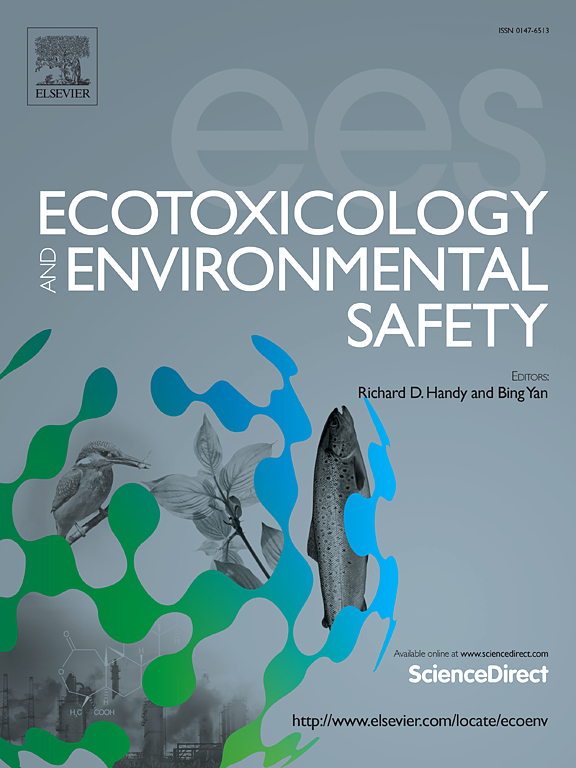Arsenic exposure activates microglia, inducing neuroinflammation and promoting the occurrence and development of Alzheimer's disease-like neurodegeneration in mice
IF 6.2
2区 环境科学与生态学
Q1 ENVIRONMENTAL SCIENCES
引用次数: 0
Abstract
Health damage caused by environmental arsenic pollution has attracted widespread attention, with Alzheimer’s disease (AD) thought to be one of the adverse effects of long-term arsenic exposure. In this study, we sought to investigate the relationship between arsenic exposure and AD-like neurodegeneration and to determine the role of microglia in the process of AD-like neurodegeneration induced by arsenic exposure. The relationship between arsenic exposure and AD-like neurodegeneration was investigated using cognitive assessments and biological experiments. Arsenic exposure induced memory impairment in C57BL/6 mice and resulted in a significant increase in the number of Aβ+ and pTau+ cells in the entorhinal cortex and hippocampus with neuronal granular vacuolar degeneration and necroptosis, accompanied by upregulated expression of related proteins, which showed dose- and time-response relationships. Arsenic exposure intensified memory decline in FAD4T mice with accelerated AD-like neurodegeneration. Correlation analysis showed a negative correlation between memory impairment and neurodegeneration in the entorhinal cortex and hippocampus in mice. Arsenic exposure also activated microglia in the entorhinal cortex and hippocampus, with enlargement of the cytosol, shortened and thickened cell protrusions, hypertrophic changes, and abnormal proliferation, as well as upregulated expression of the pro-inflammatory cytokines TNF-α and IL-1β. Arsenic exposure induced overactivation of microglia in the entorhinal cortex and hippocampus of FAD4T mice, resulting in de-branching or bulbous protrusions and fragmented cytoplasm. Our findings suggest that arsenic exposure promotes the occurrence and development of AD-like neurodegeneration via the activation of microglia, which induces neuroinflammation in mice.
求助全文
约1分钟内获得全文
求助全文
来源期刊
CiteScore
12.10
自引率
5.90%
发文量
1234
审稿时长
88 days
期刊介绍:
Ecotoxicology and Environmental Safety is a multi-disciplinary journal that focuses on understanding the exposure and effects of environmental contamination on organisms including human health. The scope of the journal covers three main themes. The topics within these themes, indicated below, include (but are not limited to) the following: Ecotoxicology、Environmental Chemistry、Environmental Safety etc.

 求助内容:
求助内容: 应助结果提醒方式:
应助结果提醒方式:


